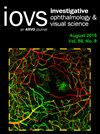眼部给药数学模型。
IF 5
2区 医学
Q1 OPHTHALMOLOGY
引用次数: 0
摘要
药物输送是眼部药物治疗成功的重要因素。然而,在通过局部、结膜下、玻璃体内或全身途径进行药物治疗时,一些物理、生物化学和与流动相关的障碍限制了药物在眼球前后靶组织中的暴露。数学模型包含各种障碍,因此可以综合模拟它们对药物动力学(PK)的共同影响。这些模型有助于预测给药的 PK 甚至药效学 (PD),从而促进新药物分子和给药系统的开发。此外,这些模型还可用于种间转换和探究疾病对 PKs 的影响。在这篇综述文章中,我们将介绍眼部 PK 和相关给药的现有建模方法(非区室分析、基于区室和生理的 PK 模型以及有限元模型)。文章讨论了自上而下模型和自下而上模拟的作用。此外,我们还提出了一些未来的挑战,如组织内分布建模、药物反应预测、定量系统药理学以及人工智能的可能性。本文章由计算机程序翻译,如有差异,请以英文原文为准。
Mathematical Models of Ocular Drug Delivery.
Drug delivery is an important factor for the success of ocular drug treatment. However, several physical, biochemical, and flow-related barriers limit drug exposure of anterior and posterior ocular target tissues during drug treatment via topical, subconjunctival, intravitreal, or systemic routes. Mathematical models encompass various barriers so that their joint influence on pharmacokinetics (PKs) can be simulated in an integrated fashion. The models are useful in predicting PKs and even pharmacodynamics (PDs) of administered drugs thereby fostering development of new drug molecules and drug delivery systems. Furthermore, the models are potentially useful in interspecies translation and probing of disease effects on PKs. In this review article, we introduce current modeling methods (noncompartmental analyses, compartmental and physiologically based PK models, and finite element models) in ocular PKs and related drug delivery. The roles of top-down models and bottom-up simulations are discussed. Furthermore, we present some future challenges, such as modeling of intra-tissue distribution, prediction of drug responses, quantitative systems pharmacology, and possibilities of artificial intelligence.
求助全文
通过发布文献求助,成功后即可免费获取论文全文。
去求助
来源期刊
CiteScore
6.90
自引率
4.50%
发文量
339
审稿时长
1 months
期刊介绍:
Investigative Ophthalmology & Visual Science (IOVS), published as ready online, is a peer-reviewed academic journal of the Association for Research in Vision and Ophthalmology (ARVO). IOVS features original research, mostly pertaining to clinical and laboratory ophthalmology and vision research in general.

 求助内容:
求助内容: 应助结果提醒方式:
应助结果提醒方式:


